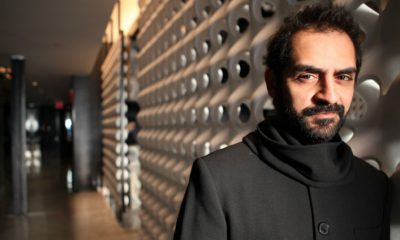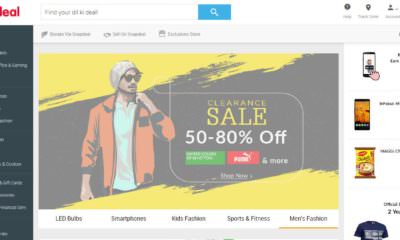Sound Plunge
India’s Masses Call Out to EDM
While EDM takes the commercial music world by storm, in India it has emerged as one of the mainstays of the independent music phenomenon with audiences taking an instant liking to it. soundplunge_test finds out more about the growing fascination with dance music in this country.
Superstar DJs and music producers Laidback Luke and DeadMau5 driving down for coffee in downtown LA for a recorded conversation, a regular series conducted with EDM artists by DeadMau5, the self appointed EDM chronicler of his times. This interview in particular, made some very pertinent points about politics of the dance music industry in contemporary times. Or at least, Luke’s clothes made a statement. The first thing you notice is the slogan on his tee-shirt which goes, “Do you even produce bro?” In the course of the conversation, amidst making light-hearted fun of Avicii, he tells DeadMau5 how he’s got another one that goes “Do you even DJ bro?”
The wry passing comment on the tee perhaps underlines the biggest dilemma undergone by superstar DJs and music producers in carving an identity for themselves, a place under the hallowed spotlight reserved for ‘musicians who are artists.’ This debate would not have been such a burning question if not for the intense popularity and interest in EDM music as a homogenised world phenomenon, a relatively recent occurrence in the music and entertainment industry (by which we mean a decade.)
Music has changed in the past decade, and the live act has become even bigger and more interactive than before. Live performances are often carnivals of huge dance floors, massive multiple stages and even rides. Lady Gaga shows are famed for their entertainment quotient, with often tending towards the bizarre fantasyscapes, costumes and other attractions. EDM artists have all picked up on the presentation bit of a live act. Hence Daft Punk’s helmets, and therefore DeadMau5 morbid mouse ears, an inseperable element of their sets. This modern day mela is something India has taken to like nothing else. The mass popularity of Sunburn Festival and the cropping up of many EDM festivals all over town are sufficient proof of that. In the last couple of years alone, some of the most renowned DJs of the world such as Tiesto, Armin Van Buuren, David Guetta, Swedish House Mafia, Deadmau5, Nicky Romero, Axwell, Avicii, The Prodigy, Fatboy Slim, Chemical Brothers, DJ Taboo and Yves Larock have come and performed in India. In fact, Dutch trance DJ Tiesto along with Armin Van Buuren and David Guetta have come to India twice each by now, and performed across the country. The same cannot be said, however, about any other genre of music in India yet, which begets icons from a generation before, like a one-off Snoop Lion or Guns N’ Roses shorn-of Slash performance. Moreover, money has flown in for the first time in a market which wasn’t really considered one before this. The sheer footfall of EDM festivals organised around the country is proof of that. For instance according to a Hindustan Times report, there were 65,000 attendees at Sunburn Goa alone in 2011, even though 40% of the crowd was foreign. By 2013, the expected footfall as the Sunburn organisers, Percept Limited claimed, was 1.4 lakhs as reported in Economic Times. The popularity of the event has resulted in two EDM festivals held at the same time in Goa Sunburn by Percept and Submerge, Nikhil Chinapa’s project backed by Viacom 18. Big sponsors including major alcohol brands, music and entertainment powerhouses such as Philips, lifestyle and fashion labels back EDM festivals. The commercial army has descended upon electronic music and seems determined to make it the staple of the urban youth.
While EDM gets clubbed as a genre since the 90s, a plethora of music comes under it, at various ends of the spectrum, from the tranquillity of trance and deep house to the energy of techno and dubstep. It is true that the country has taken to EDM with panache. What break-dancing and disco were to the 80s and 90s, EDM is to this decade.
EDM is not perceived as just about the music, but also the space and lifestyle that it creates for its audience. The EDM experience is a complete package, an audio-visual experience, crowd interaction being the crux through which its success or failure is judged, quite unlike any other genre. Festivals have played a great part in developing the EDM experience worldwide, and we see a replication of that phenomenon in India as well, Sunburn again being the game-changer in this aspect.
In fact, interestingly so, and a trickle-down effect of the commercial success of Sunburn perhaps, the organisers and their brand quotient are pulling crowds in rather than the artists themselves. For instance, for SoundAwake 2013 in the outskirts of Bangalore, which was backed by Ministry of Sound and HedKandi, huge music brands internationally, the crowds that flocked to this one-day festival were said to be around 12,000, a good number for a one-day festival located way outside the city limits. This might also be due to the fact that dance music is relatively new in India and the audience while taking to it very well, has still not developed very strong preferences. Independent electronica artists such as Nikhil Kaul aka Frame/Frame often choose to distance themselves from the dance music scenario, considering their music to be different from the space that EDM occupies, “Well, it’s not as big a message to consumers as an Avicii. But that kind of change has taken place the world over and not only India. It’s not a fair comparison to make. EDM is pop music. Next to Bollywood, EDM probably has the highest sales in India. That term has come down over many generations of getting distorted and come to the place where it is today. As far as music that I’m making or any of the artists on the EP (Swimmers: Remixed) I feel it’s getting consumed by a smaller audience. EDM is almost like a product of TV, I would say.”
Ironically, EDM is a movement that was completely underground in the 80s, and the hitherto techno and acid house strains of America and UK of the 80s has spilled over into a commercial goliath. The raves and parties are manufactured and have found their way into India as well for over half a decade now to unprecedented appreciation. As they say, yesterday’s obscure is today’s mainstream.












